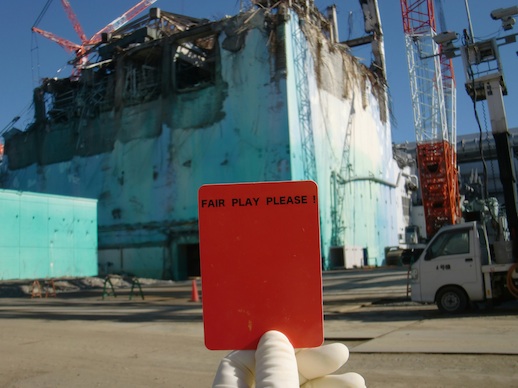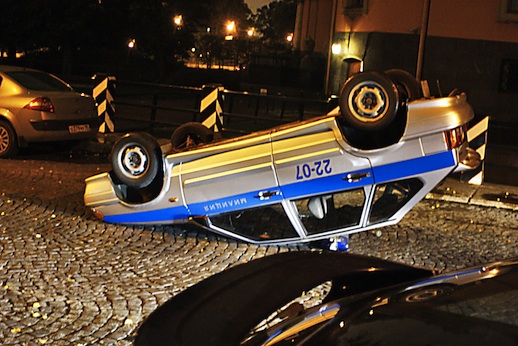Problems Political
Against what criteria are we to assess an artwork when its political agenda is expressed through activism? And likewise, what remains of activism when it is re-framed in the context of art? Even when we ignore the whole name-game squabble over how the fields of art and politics should be categorized (which, rest assured, we will), problems of this kind are bound to open up a snake-pit of entangled aesthetic and ethical questions. A good cross section of which can be found, in all their unanswered glory, at a new exhibition in Gaienmae’s Watari Museum of Contemporary Art, “Turning around”.
So, we have a couple of whopping great and probably insoluble dilemmas in front of us — but who says we can’t have a little fun along the way? And if there is anything which connects any of the loosely bound selection of artsy activism and activistic art this exhibition showcases, it is a dose of humor. Curated by Tokyo based art-group Chim↑Pom (who come across as a dubious hybrid between celebrity artists and student collective), the show is marked by their characteristic lightness. Combine this with the distinct lack of any real unity amongst the political agendas its nine participants advocate, and it becomes quite clear that we are dealing with a curatorial logic whereby ethical ends take a back-seat to creative means. Although this is no inherently negative quality, it must be recognised in order to better align our critical criteria with what “Turning around” does and does not attempt to do.

To exemplify what I mean by the show’s foregrounding of ‘creative means’ as opposed to ‘ethical ends’ we can look to one of its stand-out exhibits, the 2011 filmed performance ‘100 Kiai’. Staged in Soma (a district devastated by last year’s earthquake) and produced by Chim↑Pom in collaboration with a group of local youths, the video opens with an upward-looking shot of its participants in huddle-formation around the camera. After a brief spoken introduction, we see five minutes of loud cheers each interspersed with demands for a positive, post-quake future. Then with a simple cut, the performance’s location is revealed as the landscape of incredible destruction which Soma has become. We can read a certain romantic futility in this very vocal gesture as it echoes about the awful and un-listening context of its setting. Nothing is ‘changed’. And yet by virtue of the work’s affecting exclamations of hope — a certain catharsis is projected which this reviewer found impossible to dismiss.
Unfortunately, the same cannot always be said for the rest of Chim↑Pom’s contributions to the show, particularly where they are exhibited beside work of a more radical flavor. For instance, on the second floor of the gallery a rather unflattering contrast emerges between ‘Super Rat’ (one of the curators’ most flippant outcomes made in 2005 which uses rats caught in Shibuya for taxidermic recreations of Pokemon’s Pikachu) and a showreel of actions performed by the hard-boiled Russian performance group Voina. For those who appreciate a militant edge, the Viona stuff on show here is completely bad-ass. From painting an 213ft high erection on the Liteiny Bridge (so that when raised it salutes the Kremlin) to overturning police cars on the streets of St Petersburg; the group seem incapable of finishing anything without being arrested and/or beaten up by the authorities. Yet the bravado with which the group’s performances are carried through is fully justified by the oppressive tendencies they have made it their goal to humiliate. Compare this to a work which, viewed through an activistic lens, looks like a dainty satire on rodent life in Tokyo — and we can see how the latter falls utterly flat.

In asking why such uncomfortable contentions have been permitted, we are led back to the show’s lamentable lack of unity. Beyond the leftward lean we already expect of our artists (and even more so of our activists), little attempt has been made to forge any cohesive ‘message’. For an exhibition which also includes the laudable work of Iri & Toshi Maruki, Adbusters and the Yesmen, one feels let down by a curatorial premise which — politically speaking — demands so very little as a whole. Yet given the quality of those individual contributors, this is a failure we can perhaps forgive. And given the aforementioned lightness of its approach, that might even be the point we take away.
Barnaby Lambert
Barnaby Lambert



